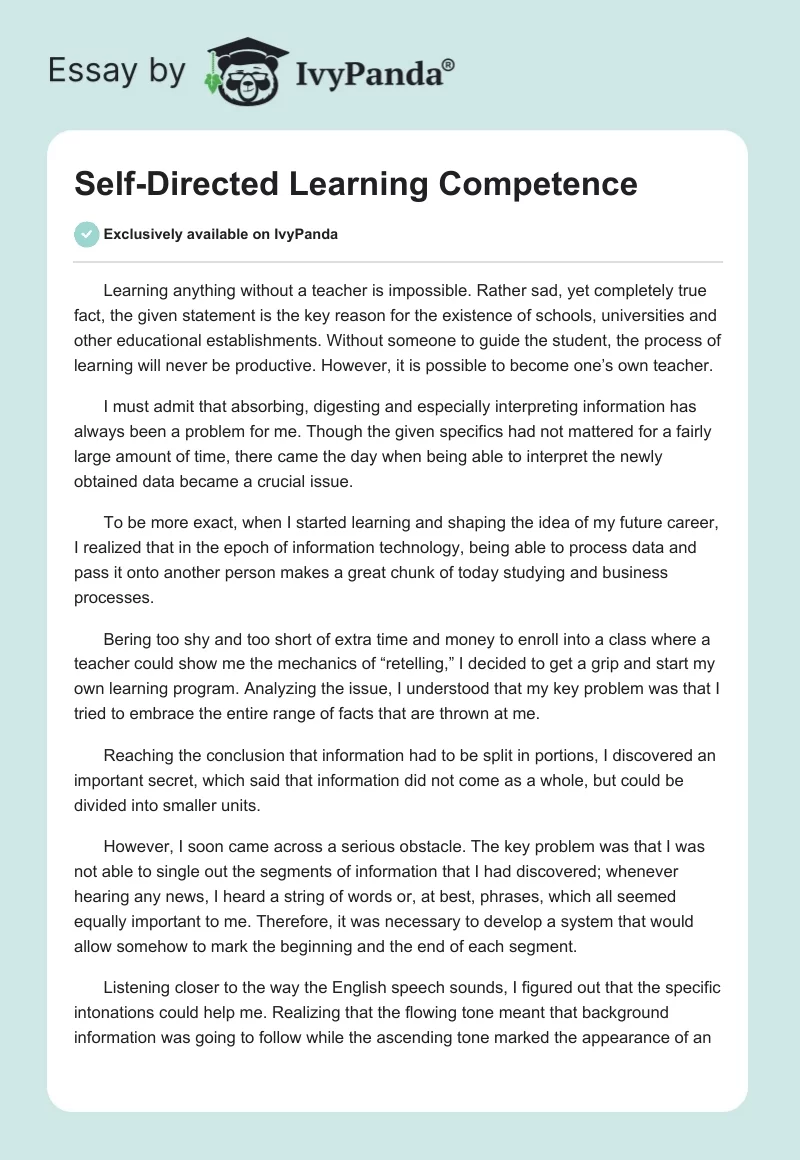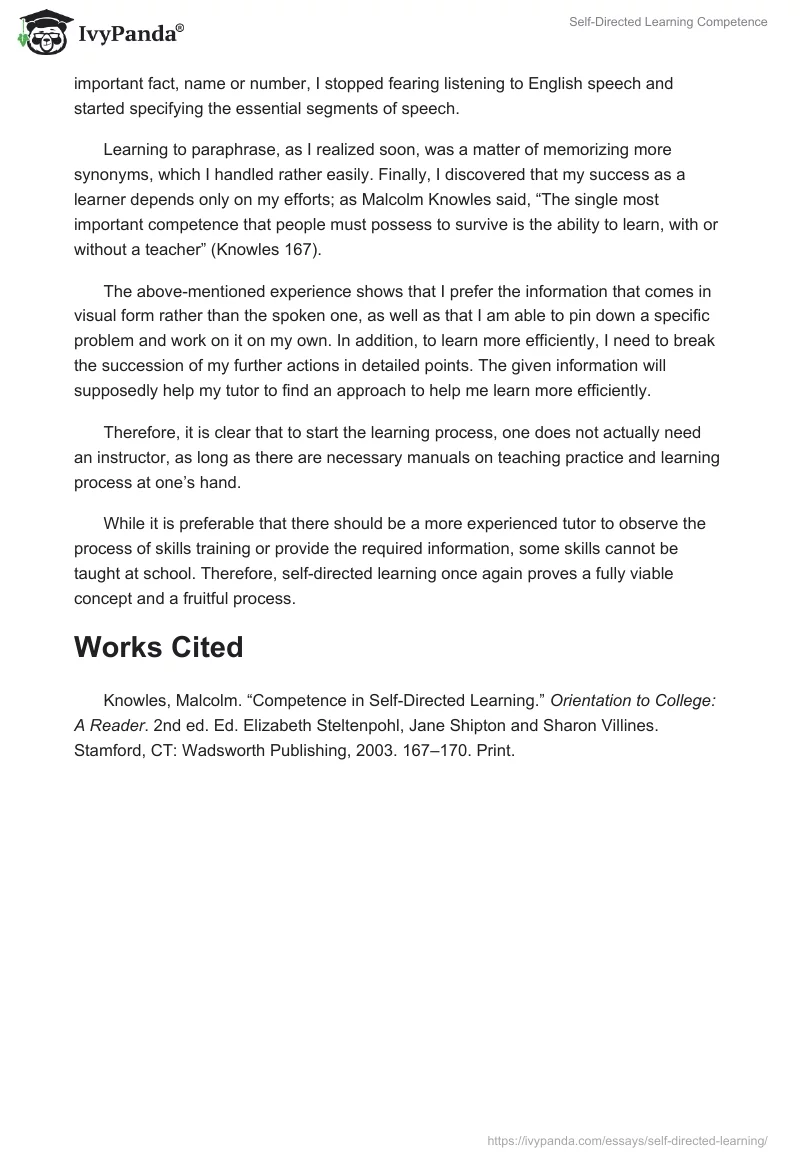Learning anything without a teacher is impossible. Rather sad, yet completely true fact, the given statement is the key reason for the existence of schools, universities and other educational establishments. Without someone to guide the student, the process of learning will never be productive. However, it is possible to become one’s own teacher.
I must admit that absorbing, digesting and especially interpreting information has always been a problem for me. Though the given specifics had not mattered for a fairly large amount of time, there came the day when being able to interpret the newly obtained data became a crucial issue.
To be more exact, when I started learning and shaping the idea of my future career, I realized that in the epoch of information technology, being able to process data and pass it onto another person makes a great chunk of today studying and business processes.
Bering too shy and too short of extra time and money to enroll into a class where a teacher could show me the mechanics of “retelling,” I decided to get a grip and start my own learning program. Analyzing the issue, I understood that my key problem was that I tried to embrace the entire range of facts that are thrown at me.
Reaching the conclusion that information had to be split in portions, I discovered an important secret, which said that information did not come as a whole, but could be divided into smaller units.
However, I soon came across a serious obstacle. The key problem was that I was not able to single out the segments of information that I had discovered; whenever hearing any news, I heard a string of words or, at best, phrases, which all seemed equally important to me. Therefore, it was necessary to develop a system that would allow somehow to mark the beginning and the end of each segment.
Listening closer to the way the English speech sounds, I figured out that the specific intonations could help me. Realizing that the flowing tone meant that background information was going to follow while the ascending tone marked the appearance of an important fact, name or number, I stopped fearing listening to English speech and started specifying the essential segments of speech.
Learning to paraphrase, as I realized soon, was a matter of memorizing more synonyms, which I handled rather easily. Finally, I discovered that my success as a learner depends only on my efforts; as Malcolm Knowles said, “The single most important competence that people must possess to survive is the ability to learn, with or without a teacher” (Knowles 167).
The above-mentioned experience shows that I prefer the information that comes in visual form rather than the spoken one, as well as that I am able to pin down a specific problem and work on it on my own. In addition, to learn more efficiently, I need to break the succession of my further actions in detailed points. The given information will supposedly help my tutor to find an approach to help me learn more efficiently.
Therefore, it is clear that to start the learning process, one does not actually need an instructor, as long as there are necessary manuals on teaching practice and learning process at one’s hand.
While it is preferable that there should be a more experienced tutor to observe the process of skills training or provide the required information, some skills cannot be taught at school. Therefore, self-directed learning once again proves a fully viable concept and a fruitful process.
Works Cited
Knowles, Malcolm. “Competence in Self-Directed Learning.” Orientation to College: A Reader. 2nd ed. Ed. Elizabeth Steltenpohl, Jane Shipton and Sharon Villines. Stamford, CT: Wadsworth Publishing, 2003. 167–170. Print.


